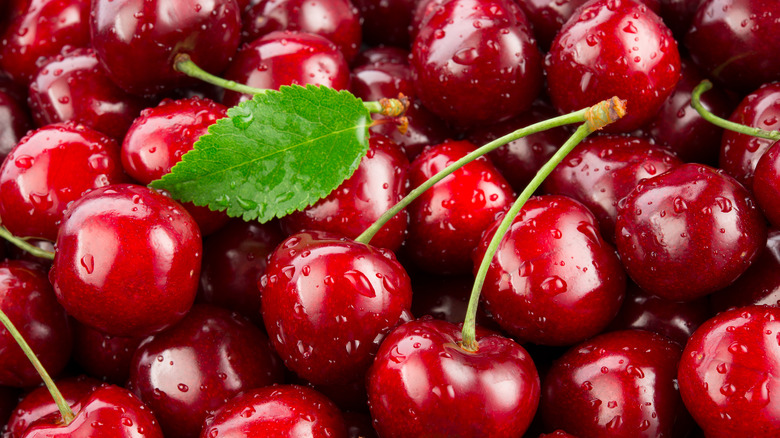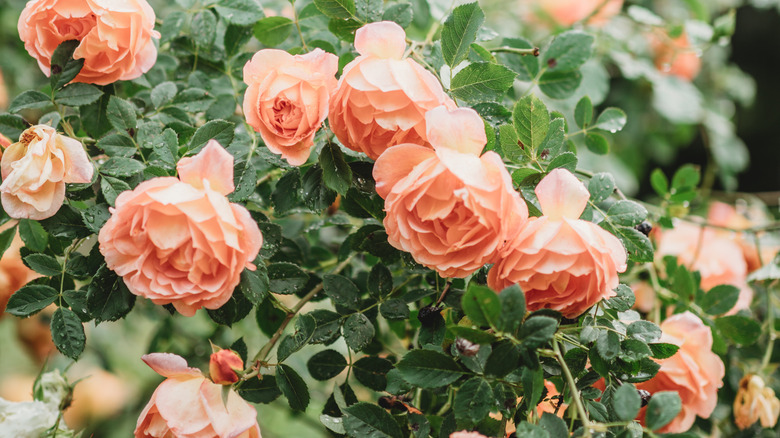Cherries And Roses Are More Alike Than You Might Have Thought
Telling the difference between fruits and vegetables can be tricky — perhaps the most notable misperception being that tomatoes are vegetables, when, in fact, they are actually a fruit. And as McGill University points out, a banana is a berry, but, technically, a strawberry isn't. This shows that our colloquial ideas of plants and their scientific classifications can be wildly different. All living things are scientifically categorized by taxonomy, a classification system that starts broad and gets very specific, right down to the individual species. All organisms are classified by kingdom, phylum, class, order, family, genus, and then species (via Britannica).
The kingdom is the most broad, determining if an organism is a plant, animal, fungus, bacteria, etc. From there, things start to gradually narrow, reducing the pool and grouping them by similar biological characteristics all the way down to the specific species. This is how you might find a common thread between two organisms that don't seem to have much in common on the surface. But what's in a name, and might a rose by any other name smell ... like cherries?
Cherries and roses are from the same taxonomic family
While sweet cherries are classified as Prunus avium, according to the Integrated Taxonomic Information System, they share many genetic similarities with other species in other taxonomic categories. While it may not seem like they're related at first glance, sweet cherries and roses share a common taxon; they're both in the family rosacea, though they each belong to a separate genus within that taxonomic family. Other fruits in the same genus as cherries are apricots, nectarines, peaches, and plums — all various types of stone fruits, which are best in the summer months. Other shrubs and plants like mountain mahogany, lady's mantle, and agrimony share a genus with roses (via Britannica).
The plants and fruits that share a genus seem to relate logically, but all these other examples are in the same larger taxon, the rosacea family, even if they seem to be totally different types of plants. The rosacea family, including roses and cherries, are angiosperms, a.k.a flowering plants according to Britannica. If you think of cherries as the whole plant, it's easier to see the common ground between a pink cherry blossom and a pink rose. Brambles, like raspberries, also share a genus with roses, and flowering raspberry plants share a resemblance to cherry trees loaded with blossoms. Even though their differences make it seem like they would clash, cherry and rose is actually a delicious flavor combination. A google search for "cherry and rose" pulls up recipes for lassi, mimosas, spritzers, and lemonade.

